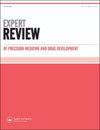Artificial intelligence-enabled electrocardiogram: can we identify patients with unrecognized atrial fibrillation?
IF 1.2
Q4 PHARMACOLOGY & PHARMACY
Expert Review of Precision Medicine and Drug Development
Pub Date : 2020-03-04
DOI:10.1080/23808993.2020.1735935
引用次数: 0
Abstract
Atrial fibrillation (AF) is known to affect at least 30 million people worldwide [1,2], although this may be an underestimation. AF can be asymptomatic and fleeting and often goes undetected. In fact, it has been estimated that approximately one million Americans live with unrecognized AF [3]. The proportion of patients with paroxysmal AF versus persistent AF varies with age (with paroxysmal AF more common in patients <50 years), and it is estimated that about 25% of patients with AF have a paroxysmal pattern [4]. Identifying patients with undiagnosed AF is important as they have a fivefold increased risk of stroke [1,2] and the first manifestation of AF may be a disabling stroke. Furthermore, AF-related strokes carry a particularly poor prognosis [3,5]. When AF is recognized, interventions including oral anticoagulation or left atrial appendage closure can lower stroke risk and mortality [5,6]. Due to its frequently paroxysmal nature, AF is often under detected. Currently, prolonged electrocardiographic monitoring is implemented to detect patients with suspected AF – a process that is expensive, resource intensive, and at times poorly tolerated. In nearly 5,000 patients referred for continuous 24-hour monitoring, the prevalence of paroxysmal AF was 2.5% [7]. It has been estimated that even among a highrisk cohort of patients with ischemic strokes, 20% remain cryptogenic despite thorough diagnostic evaluation [5]. Apart from the low yield, long-term cardiac monitoring is resource intensive, expensive, and impractical for broad-scale application. A frequent clinical dilemma is whether or not to anticoagulate patients without documented AF based on incomplete information; studies of empiric anticoagulation following embolic stroke of uncertain source have found no benefit and harm (i.e. bleeding) [8,9]. Therefore, it is essential to detect paroxysmal AF to guide therapy to prevent stroke. Recently, we developed an artificial intelligence-enabled electrocardiogram (AI-ECG) algorithm using over 500,000 normal sinus rhythm standard 10-second 12-lead ECGs from over 180,000 patients using machine learning to identify those with a high likelihood of undocumented AF [10]. This work demonstrated that the application of a convolutional neural network (CNN) to a single ECG recorded during sinus rhythm could effectively identify paroxysmal AF, with an area under the receiver operator curve (AUC) of 0.87 (95% confidence interval [CI], 0.86–0.88), sensitivity of 79.0% (95% CI, 77.5–80.4%), specificity of 79.5% (95% CI, 79.0–79.9%), F1 score of 39.2% (95% CI, 38.1–40.3%), and overall accuracy of 79.4% (95% CI, 79.0–79.9%). The diagnostic yield improved when applied to patients with multiple ECGs (AUC 0.90). With the impressive performance of the AI-ECG algorithm, the question becomes: what is the AI seeing that the human eye is missing? Due to the nature of CNNs, identification of the signal features selected by the AI is currently not possible. We presume that underlying structural changes (e.g. myocyte hypertrophy, fibrosis, chamber enlargement) precede the onset of AF and that these substrate changes result in subtle yet detectable ECG changes. It has been reported that normal sinus rhythm on a surface ECG may not accurately reflect atrial function. One report found approximately one-third of patients with AF undergoing cardioversion to lack sinus contraction of the left atrial appendage despite a surface ECG demonstrating sinus rhythm [11]. Another report showed that about one-fourth of patients had a surface ECG revealing sinus rhythm despite fibrillation of the left atrial appendage documented via transesophageal echocardiogram [12]. These studies suggest that there may be unrecognized patterns on the ECG associated with AF that are detectable during sinus rhythm by means of deep neural network. The exposure of CNN to over half a million ECGs enables it to extract and process subtle features not routinely noticed by the human eye. In a recently published clinical case, we reported a patient with a cryptogenic stroke deferred anticoagulation therapy, based on the lack of documented AF on long-term cardiac monitoring, who developed another stroke a few years later [13]. Retrospective AI-ECG analysis of this patient’s available ECGs in sinus rhythm demonstrated the patient had a high likelihood of undiagnosed AF years before the incident stroke events. Based on these findings, one may have considered it reasonable to initiate anticoagulation therapy earlier in the course and possibly preventing harm to the patient. This exemplifies a potential clinical role for the AI-ECG algorithm in management decisions and poses the question: could人工智能心电图:我们能识别未被识别的房颤患者吗?
众所周知,心房颤动(AF)影响着全球至少3000万人[1,2],尽管这可能被低估了。AF可能是无症状的、短暂的,并且经常未被发现。事实上,据估计,大约有100万美国人患有未被识别的AF[3]。阵发性房颤患者与持续性房颤患者的比例因年龄而异(阵发性房颤在<50岁的患者中更常见),据估计,约25%的房颤患者具有阵发性模式[4]。识别未确诊的房颤患者很重要,因为他们中风的风险增加了五倍[1,2],而房颤的第一个表现可能是致残性中风。此外,房颤相关中风的预后特别差[3,5]。当房颤被识别时,包括口服抗凝或左心耳关闭在内的干预措施可以降低中风风险和死亡率[5,6]。由于其经常发作的性质,房颤经常被低估。目前,长期心电图监测是为了检测疑似房颤患者——这一过程成本高昂、资源密集,有时耐受性较差。在近5000名接受24小时连续监测的患者中,阵发性房颤的患病率为2.5%[7]。据估计,即使在缺血性中风的高危患者队列中,尽管进行了彻底的诊断评估,仍有20%的患者是隐性遗传[5]。除了产量低之外,长期心脏监测是资源密集型的、昂贵的,并且对于大规模应用来说不切实际。一个常见的临床难题是,是否根据不完整的信息对没有AF记录的患者进行抗凝治疗;不确定来源的栓塞性卒中后的经验性抗凝研究没有发现任何益处和危害(即出血)[8,9]。因此,检测阵发性房颤,指导治疗预防脑卒中至关重要。最近,我们开发了一种人工智能心电图(AI-ECG)算法,该算法使用来自180000多名患者的500000多个正常窦性心律标准10秒12导联心电图,使用机器学习来识别那些有很高可能发生无记录房颤的患者[10]。这项工作表明,将卷积神经网络(CNN)应用于窦性心律期间记录的单个心电图可以有效识别阵发性房颤,受试者-操作者曲线下面积(AUC)为0.87(95%置信区间[CI],0.86–0.88),灵敏度为79.0%(95%CI,77.5–80.4%),特异性为79.5%,F1得分为39.2%(95%CI,38.1–40.3%),总体准确率为79.4%(95%CI:79.0–79.9%)。当应用于多个心电图的患者时,诊断率有所提高(AUC 0.90)。随着AI-ECG算法令人印象深刻的性能,问题变成了:人工智能看到人眼缺失的是什么?由于细胞神经网络的性质,目前无法识别人工智能选择的信号特征。我们推测,潜在的结构变化(如肌细胞肥大、纤维化、房增大)发生在房颤发作之前,这些基质变化会导致微妙但可检测的心电图变化。据报道,表面心电图上正常的窦性心律可能无法准确反映心房功能。一份报告发现,尽管表面心电图显示有窦性心律,但大约三分之一接受心脏复律的房颤患者左心耳没有窦性收缩[11]。另一份报告显示,尽管经食道超声心动图记录了左心耳颤动,但约四分之一的患者的体表心电图显示窦性心律[12]。这些研究表明,在窦性心律期间,通过深度神经网络可以检测到与房颤相关的心电图上可能存在未识别的模式。CNN暴露在50多万个心电图中,使其能够提取和处理人眼不常注意到的细微特征。在最近发表的一个临床病例中,我们报告了一名患有隐源性中风的患者,由于缺乏长期心脏监测记录的房颤,推迟了抗凝治疗,几年后他又发生了一次中风[13]。对该患者窦性心律可用心电图的回顾性AI-ECG分析表明,该患者在中风事件发生前几年很有可能发生未诊断的房颤。基于这些发现,人们可能认为在病程早期开始抗凝治疗是合理的,并可能防止对患者的伤害。这说明了AI-ECG算法在管理决策中的潜在临床作用,并提出了一个问题:
本文章由计算机程序翻译,如有差异,请以英文原文为准。
求助全文
约1分钟内获得全文
求助全文
来源期刊

Expert Review of Precision Medicine and Drug Development
PHARMACOLOGY & PHARMACY-
CiteScore
2.30
自引率
0.00%
发文量
9
期刊介绍:
Expert Review of Precision Medicine and Drug Development publishes primarily review articles covering the development and clinical application of medicine to be used in a personalized therapy setting; in addition, the journal also publishes original research and commentary-style articles. In an era where medicine is recognizing that a one-size-fits-all approach is not always appropriate, it has become necessary to identify patients responsive to treatments and treat patient populations using a tailored approach. Areas covered include: Development and application of drugs targeted to specific genotypes and populations, as well as advanced diagnostic technologies and significant biomarkers that aid in this. Clinical trials and case studies within personalized therapy and drug development. Screening, prediction and prevention of disease, prediction of adverse events, treatment monitoring, effects of metabolomics and microbiomics on treatment. Secondary population research, genome-wide association studies, disease–gene association studies, personal genome technologies. Ethical and cost–benefit issues, the impact to healthcare and business infrastructure, and regulatory issues.
 求助内容:
求助内容: 应助结果提醒方式:
应助结果提醒方式:


